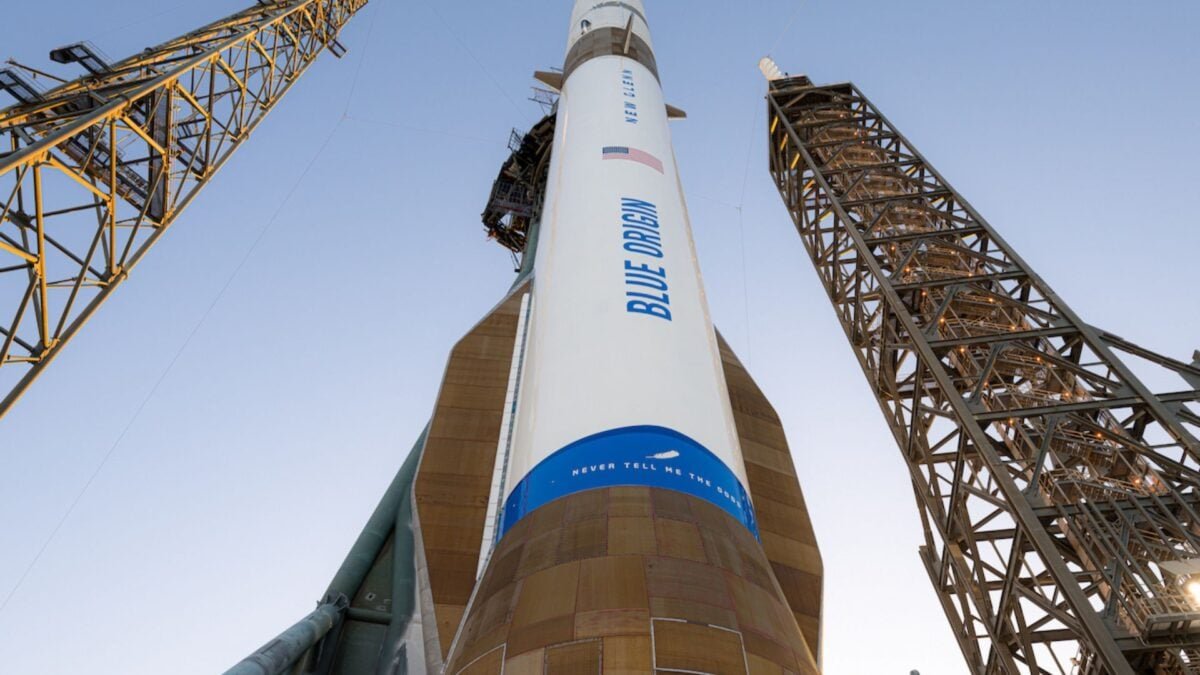
Blue Origin will make another attempt Thursday afternoon to launch its new Glenn megarocket carrying NASA’s Escapade Mars mission.
After an initial launch failure on Sunday due to bad weather and a disoriented cruise ship, Blue Origin aborted its second attempt on Wednesday due to a severe geomagnetic storm. Although the storm’s severity has diminished, NOAA’s Space Weather Prediction Center expects it to persist through the weekend, with severe conditions likely well into Thursday.
Our second New Glen launch may be visible to people in the areas below. Here’s when and where to look skyward! pic.twitter.com/BkItU3x1Bk
– Blue Origin (@blueorigin) 13 November 2025
It’s surprising that Blue Origin is willing to give the launch another chance before space weather conditions clear up. There are significant risks associated with launching rockets during a geomagnetic storm, and Blue cannot afford any mishaps. During this test flight, New Glenn will launch NASA’s twin $80 million ESCAPADE probes on a trip to the Red Planet, so both the company and NASA have a lot riding on this mission.
New Glenn is ready to lift off from Launch Complex 36 at Cape Canaveral Space Force Station in Florida. The launch window opens at 2:57 pm ET and closes at 4:25 pm ET. Blue Origin will begin livestreaming the event about 20 minutes before liftoff, and you can watch right here.
Add:
You can also watch the launch on the third-party livestream below.
risky business
The ongoing geomagnetic storm began Tuesday evening with the arrival of two coronal mass ejections, huge bursts of plasma and magnetic fields from the sun’s surface. This caused a major disturbance in Earth’s magnetosphere – a geomagnetic storm – which was exacerbated by the arrival of a third, larger CME on Wednesday.
Geomagnetic storms can increase the likelihood of auroras at latitudes to the south and can disrupt power systems, radio communications, and spacecraft operations. This means there is a risk of interference with New Glenn’s communications and navigation systems during today’s test flight. These storms also heat the upper atmosphere, which can increase drag and change climbing conditions.
That being said, Blue Origin apparently believes the risks are low enough to warrant another launch attempt today. Launch operators will continue to monitor space weather conditions during the lead-up to liftoff. Even if it looks like problems may arise, they may still provide clarification at the last minute.
Third time’s the charm?
If New Glenn manages to get off the ground today, ESCAPADE will deploy the probe immediately after rocket stage separation. According to NASA, the twin spacecraft will depart on an 11-month-long flight to Mars, where they will investigate how the solar wind interacts with Mars’ magnetic environment and how it drives the planet’s atmospheric escape.
at the station pic.twitter.com/W45tqZUhAw
– Jeff Bezos (@JeffBezos) 13 November 2025
Blue Origin will also attempt to recover the booster via a soft landing on a barge named Jacqueline located in the Atlantic Ocean. The company had previously attempted this with its first New Glenn booster, but it failed to properly fire its three BE-4 engines for the reentry burn.
Performing the booster recovery is a significant milestone for New Glenn, as is deploying a deep space mission. If Blue Origin can achieve both of these goals today, it would put New Glenn on the map as a strong competitor for NASA science missions and national defense contracts. If things go badly, the company risks seriously souring its relationship with NASA. Hopefully, third time’s the charm.
